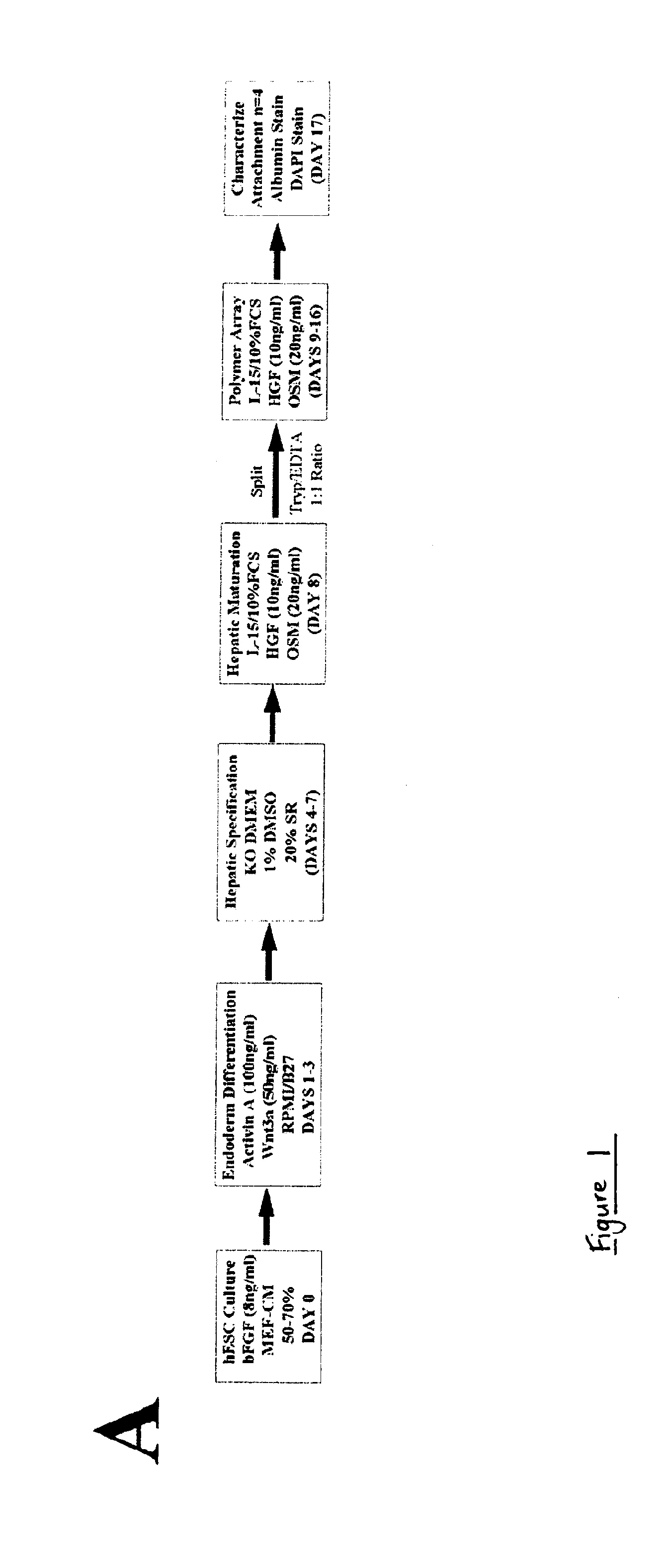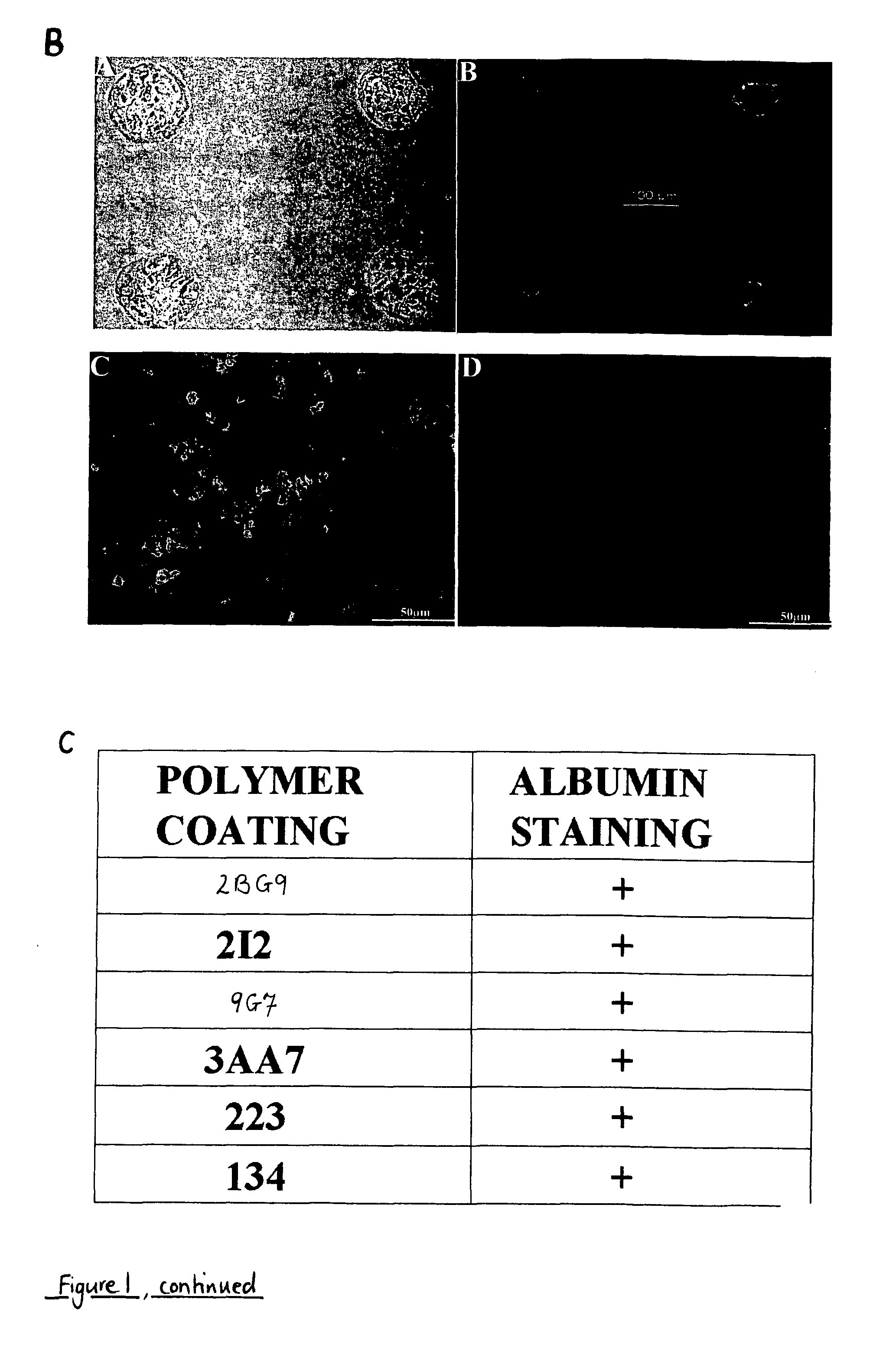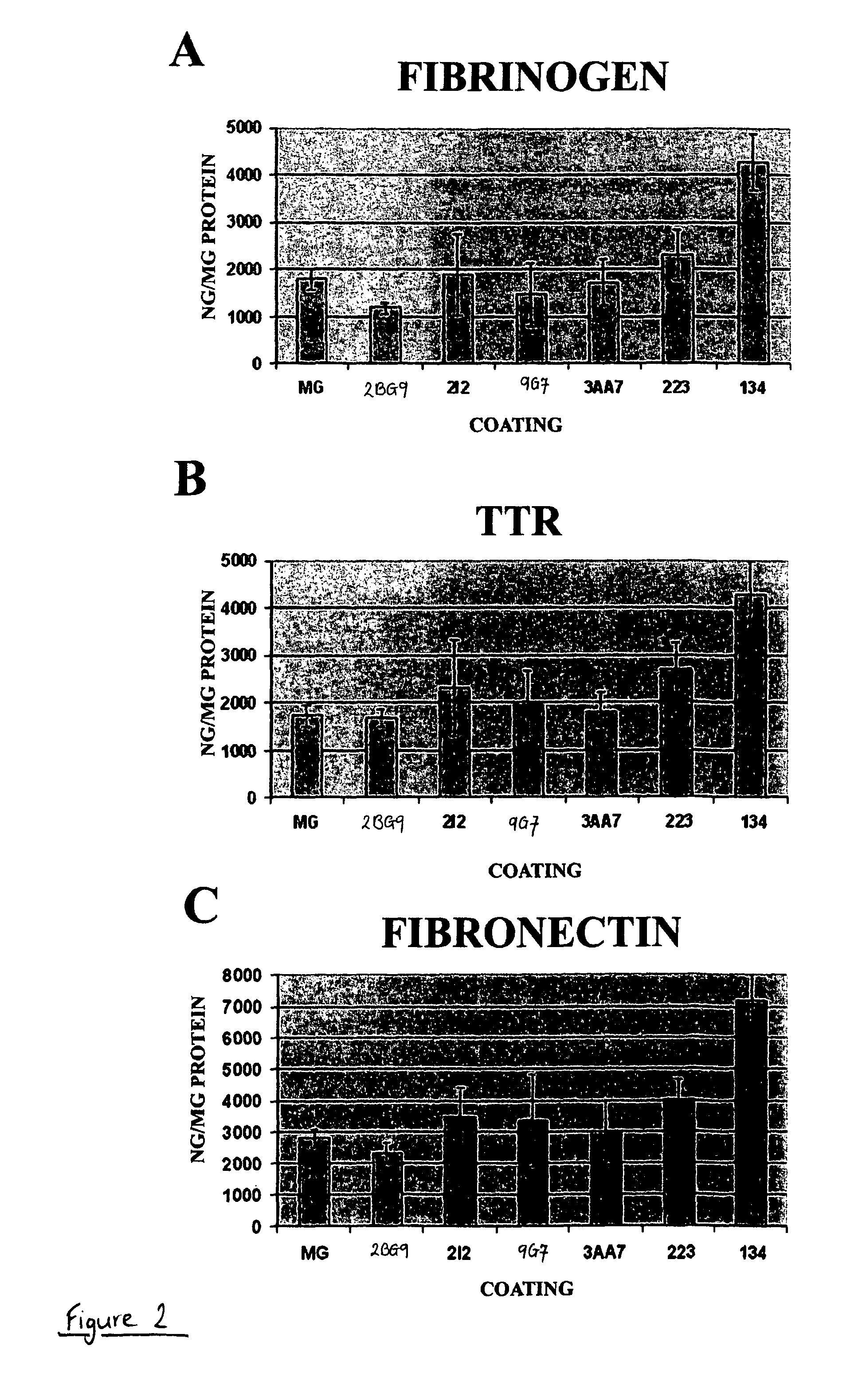Polymers for growing cells
a technology for growing cells and polymers, applied in the field of polymers for growing cells, can solve the problems of elusive long-term hepatocyte function efficient maintenance and heavily influenced drug development costs, and achieve the effect of great effect on hepatic function
- Summary
- Abstract
- Description
- Claims
- Application Information
AI Technical Summary
Benefits of technology
Problems solved by technology
Method used
Image
Examples
example 2
Evaluation of Selected Polymers
[0051]Human-ESCs were differentiated and replated as detailed. Cell function was assessed at 15 days post re-plating and defined by expression of a panel of hepatocyte specific genes and export of essential serum proteins. Using this strategy, polymer 134 [7] was identified as the most effective cellular support associated with enhanced expression of Fibrinogen [9] (FIG. 2A), transthyretin (TTR) [10] (FIG. 2B) and soluble fibronectin [11] (FIG. 2C). We also observed a significant change in HLC morphology between the two ECMs (day 15). HLCs passaged and maintained on matrigel or polymers 2BG9, 212, 9G7, 3AA7 and 223 (FIG. 3A and FIG. 4A) were granular. In contrast, HLCs replated on 134 maintained a clear hepatic morphology (FIG. 4A). We then analysed key cytochrome p450 (CYP) activities on the different extra-cellular matrices. CYP1A2 activity was increased ˜6 fold on polymer 134 as compared to standard matrigel conditions or the other polymers assessed...
example 3
Extensive Characterisation of hESC-Derived HE on Polymer 134 and Matrigel
[0053]Our further studies focussed on HE morphology, signalling, gene expression and drug metabolism on two extracellular matrices, Matrigel and polymer 134. Matrigel was used as our control as it has previously been shown to improve hepatocyte performance in vitro and is currently considered the “gold standard”. We observed a significant change in HE morphology (day 24), thus HE passaged and maintained on matrigel or polymers 2BG9, 212, 9G7, 3AA7 and 223 (FIG. 3A and FIG. 4A) were granular. In contrast, HE replated on 134 maintained a clear hepatic morphology (FIG. 4A). In line with changes in cellular morphology we also observed changes in general cell signalling and hepatic gene expression. hESC-HE maintained on polymer 134 displayed increased FAK, Akt and ERK signalling, consistent with the cells becoming firmly attached to their substrate and not under-going apoptosis. This was not observed in HE maintaine...
example 4
Attachment of hESC-Derived He onto Native and Polymer 134 Coated Bioartifical Liver Matrix
[0054]We employed the polyfibre core (PFC), the cell matrix, used in a bio-artificial liver (BAL) device. The PFC was used in its native form or coated with polymer 134. Upon adopting a hepatic fate (Day 9), HE was detached from the biological extracellular matrix and replated onto native or polymer coated PFC and cultured for a further 15 days (day 24) in conditions that support hepatic identity. At day 24 we fixed HE attached to the uncoated (FIG. 6Aa) and polymer coated BAL matrix (FIG. 6Ac) and examined cell structure by electron microscopy. hESC-derived HE maintained on uncoated PFC demonstrated cell attachment and cell processes resembling stress fibres (FIG. 6Ab) whereas HE maintained on polymer 134 coated PFC exhibited a smooth tissue like appearance (FIG. 6Ad) which may limit the effects of fluid shear stress on HE in the BAL.
PUM
| Property | Measurement | Unit |
|---|---|---|
| molecular weight | aaaaa | aaaaa |
| hydrophobic/hydrophilic | aaaaa | aaaaa |
| period of time | aaaaa | aaaaa |
Abstract
Description
Claims
Application Information
 Login to View More
Login to View More - R&D
- Intellectual Property
- Life Sciences
- Materials
- Tech Scout
- Unparalleled Data Quality
- Higher Quality Content
- 60% Fewer Hallucinations
Browse by: Latest US Patents, China's latest patents, Technical Efficacy Thesaurus, Application Domain, Technology Topic, Popular Technical Reports.
© 2025 PatSnap. All rights reserved.Legal|Privacy policy|Modern Slavery Act Transparency Statement|Sitemap|About US| Contact US: help@patsnap.com



